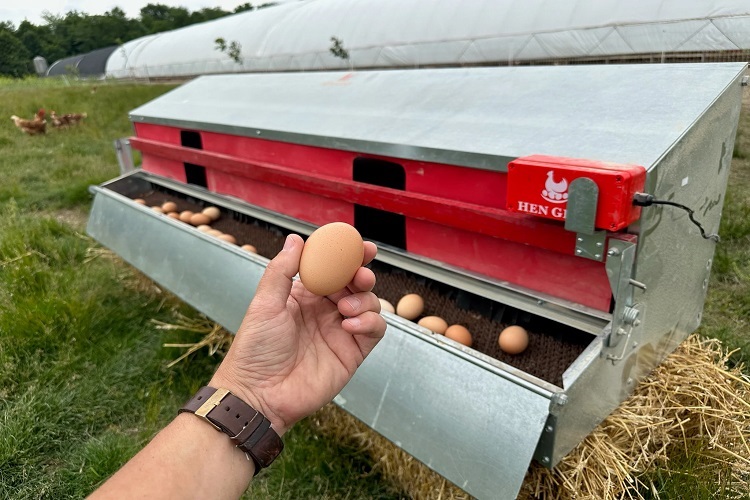For poultry businesses, ranging from boutique urban farm suppliers to large-scale egg producers, strategic infrastructure choices directly influence productivity, brand positioning, and bottom-line performance.
One such decision involves selecting between wood or plastic chicken nesting boxes. While seemingly minor, this choice has significant implications for operational efficiency, cost management, and customer perception.
Here’s a business-focused comparison to help guide your infrastructure investment.
Table of Contents
Wooden Nesting Boxes: Branding Flexibility with Customization Upside
- Enhancing Brand Identity: Wooden boxes support a rustic, farm-to-table aesthetic that aligns well with brands targeting premium, organic, or sustainability-driven markets. For agribusinesses differentiating through heritage values or artisanal positioning, wood offers a visual and narrative advantage.
- Natural Thermal Regulation: Wood provides natural insulation, supporting stable temperatures in variable climates. This can help optimize laying conditions, particularly in colder regions, reducing the need for supplemental climate control—a potential savings lever.
- Customization Potential: For businesses modifying legacy coops or developing tailored facility layouts, wood allows for cost-effective, on-site customization using readily available labor. This can be particularly useful for operations scaling in non-standard configurations.
- Sustainability Credentials: Using reclaimed or certified sustainable wood offers marketing leverage in eco-conscious markets. It supports ESG narratives and may align with regulatory incentives or grant programs focused on environmental stewardship.
- Operational Drawbacks: However, wooden infrastructure requires ongoing maintenance. It is vulnerable to moisture, rot, and pest infestations. Over time, these challenges increase operational costs through labor-intensive upkeep and potential replacement, especially in high-humidity or high-turnover environments.
Plastic Nesting Boxes: Operational Efficiency and Scalability
- Hygiene and Sanitation: Plastic boxes offer superior cleanability—an essential feature in modern poultry operations where disease control, egg cleanliness, and biosecurity are paramount. Quick to sanitize, they support faster turnaround and reduced labor costs.
- Modular and Lightweight: Ideal for agile operations, plastic nesting systems are easy to install, relocate, or expand. This flexibility supports growing businesses or mobile poultry units, enabling faster scale-ups and reconfigurations.
- Durability and Low Maintenance: Plastic resists rot, corrosion, and pests—making it an ideal long-term investment for minimizing downtime and reducing total cost of ownership. For businesses focused on operational resilience, this durability presents a strategic advantage.
- Productivity-Enhancing Features: Modern plastic systems often include integrated innovations like roll-away egg trays, anti-roost features, and detachable components. These upgrades streamline egg collection and reduce breakage, improving labor efficiency and ROI.
- Potential Limitations: Plastic’s lack of insulation may require added bedding or seasonal adaptations. Over time, UV exposure may degrade material integrity in outdoor settings. From a marketing perspective, some consumer segments may view plastic infrastructure as misaligned with “natural” or organic brand promises.
Strategic Considerations for Poultry Operations
- Environmental Factors: Cold climates favor wood’s thermal properties; humid or wet conditions benefit from plastic’s resistance to mold and pests.
- Labor Optimization: Plastic nesting boxes reduce cleaning and maintenance demands, translating into higher labor productivity and lower operational costs.
- Market Alignment: Wood reinforces a narrative of tradition, sustainability, and craftsmanship. Plastic aligns with high-efficiency, commercial-scale operations where throughput and sanitation are paramount.
- Cost-Benefit Over Lifecycle: While wood may have a lower initial outlay, plastic offers long-term savings through reduced maintenance, extended lifespan, and labor efficiency.
Conclusion
Choosing between wooden and plastic nesting boxes is ultimately a strategic infrastructure decision. It’s not merely about cost or aesthetics, it’s about aligning your facilities with your business model, operational goals, and market positioning.
Many poultry enterprises find success with a hybrid approach: deploying wooden boxes where brand experience matters (e.g., farm tours or direct-to-consumer setups), and using plastic where scale, hygiene, and efficiency are critical. In a competitive market, smart infrastructure choices can drive margin gains, enhance brand equity, and future-proof your operation.

